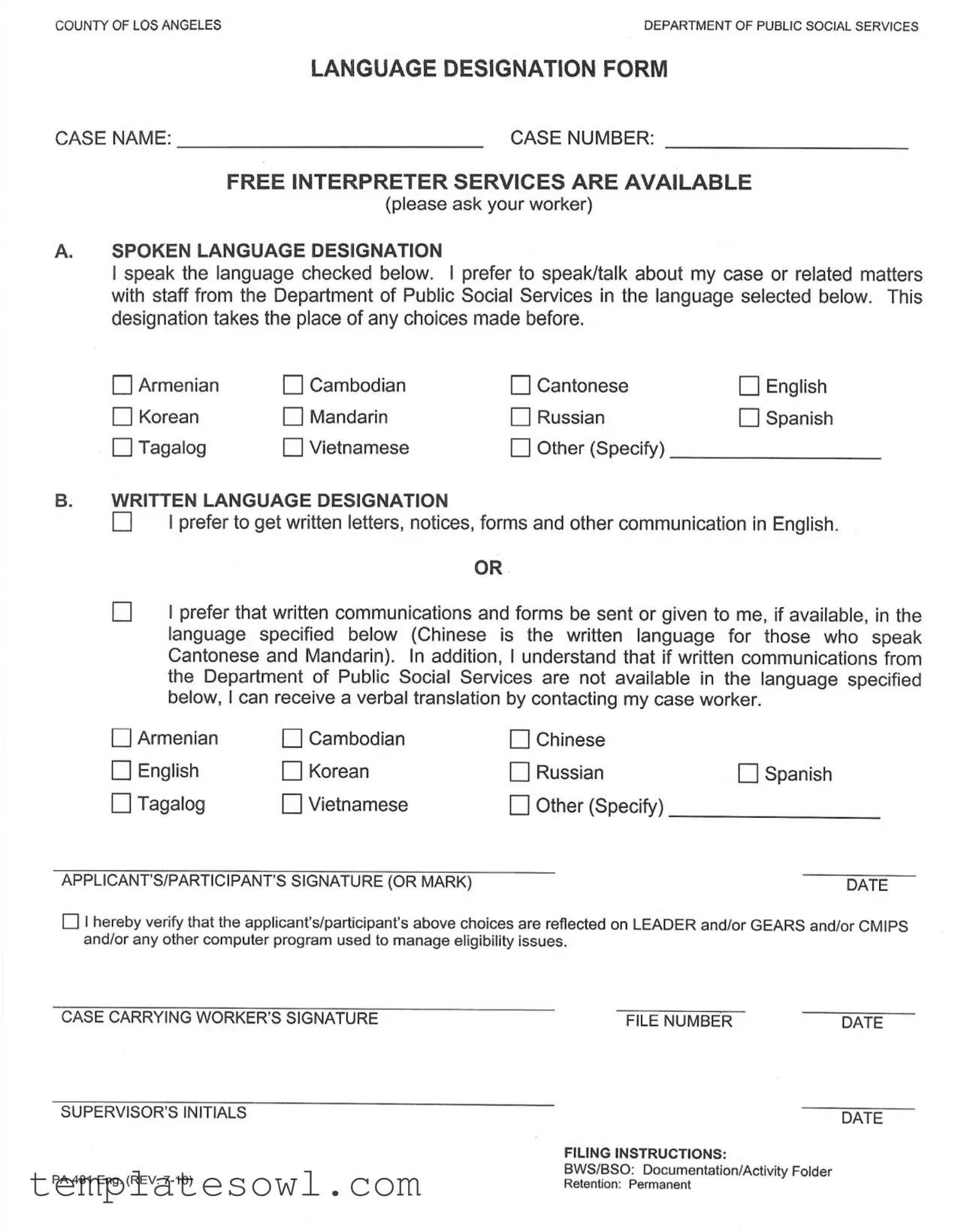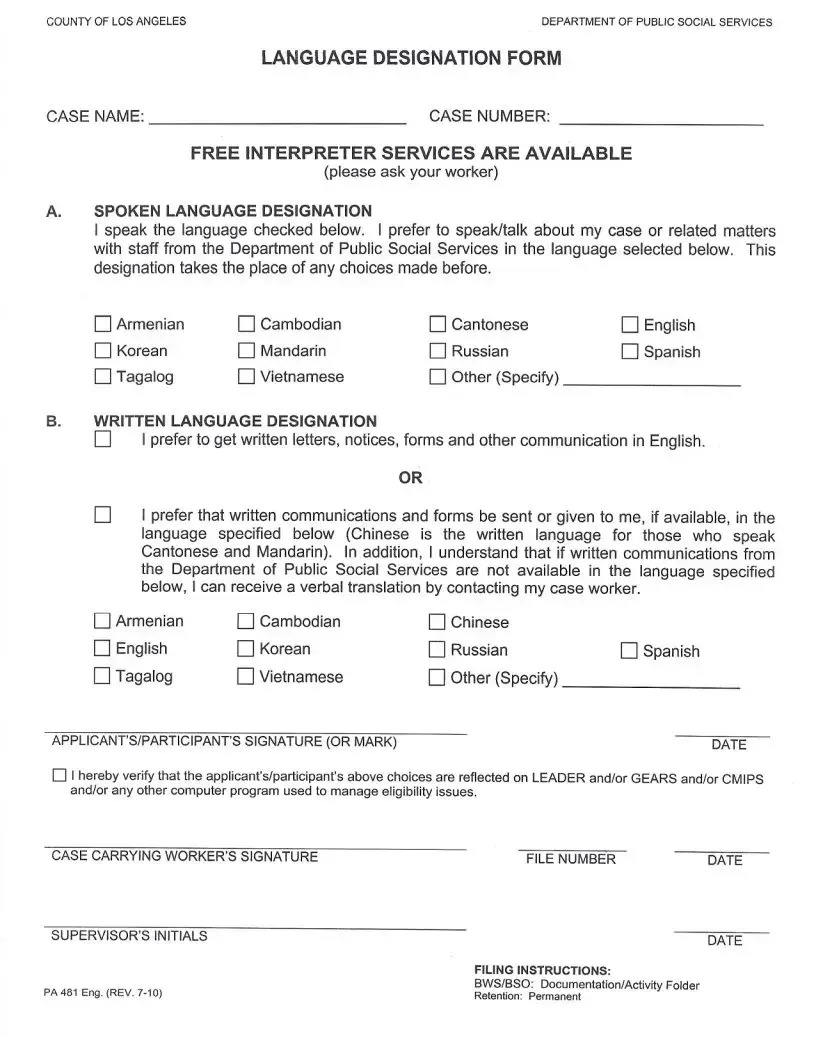When filling out the PA 481 form, many individuals make common mistakes that can lead to misunderstandings or delays in processing their applications. Awareness of these pitfalls can help ensure clearer communication and faster service.
One frequent error is neglecting to check the appropriate language designation. It's essential to mark the language you speak clearly, as this will influence how staff communicate with you. When the language box is left blank or checked incorrectly, it can result in miscommunications that affect your case.
People often overlook the written language designation part of the form. It's important to indicate whether you prefer to receive written communications in English or another language. Not specifying a preference can lead to receiving important documents in a language you may not understand, complicating your case further.
Inadequate attention to the section for specifying another language can also cause problems. If you select "Other" without clearly writing down the language, the department will have no idea how to communicate with you. Filling out this section completely ensures that all your preferences are accurately captured.
Another mistake is failing to sign and date the application properly. Incomplete signatures or missing dates can delay the processing of your form. Always verify that the signature matches the name on the application to avoid any issues.
Some individuals may assume that their previously indicated languages are still in effect without reconfirming their choices on the form. Each PA 481 submission requires fresh verification of language preferences. Outdated selections could lead to a breakdown in communication.
It's also crucial to ensure that the case carrying worker’s section is filled out correctly. Any inaccuracies here can lead to confusion about who is managing your case, further delaying assistance. Take the time to double-check this information.
People sometimes forget to seek assistance if they encounter difficulties while completing the form. There are resources available, such as a case worker who can help explain the instructions or clarify any uncertainties. Ignoring this resource can lead to preventable mistakes.
Finally, misplacing the completed form is a frequent issue. Ensure that you keep a copy for your records and submit the original in the proper manner. Not tracking your submission can result in unnecessary stress should you not receive a timely response.
By avoiding these nine common mistakes, you can improve your chances of having your form processed smoothly and your needs met promptly.

